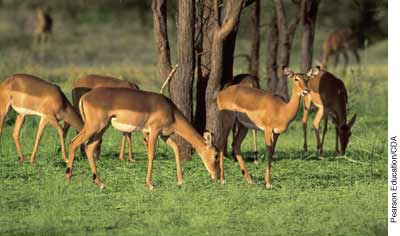
Living Things

| Classification | Needs of Living Things | Characteristics of Living Things |
Characteristics of Living Things
All living things share six characteristics:
Cell organization
All organisms are made of one or
more cells. Cells are the basic unit
of structure and function. Cells come in different sizes and shapes, yet all
cells are microscopic.
This piece of wood is no longer living. How can you tell it was
once part of
a living thing?
Answer
Living things are two types: multicellular and unicellular.
Adapt to their environment:
An adaptation : a structure or behavior that allows an organism to live in his
environment. e.g. growing claws for protection, teeth for getting food, growing
hands and tails for building homes.
Energy
All living things obtain and use
energy. Living things get energy from surroundings. Plants get it from
sunlight. Animals get it from food they eat.

Reproduction
All organisms reproduce. Reproduction is the production of other
organisms like themselves. Reproduction is needed for the survival necessary for the survival of the group
and not for the survival of the individual. It is two types: sexual and asexual.
Sexual reproduction: Two Parents of different sexes: one sperm (
produced by the male) unites with the egg (produced by female) to produce a
zygote that develops to adult.

Asexual reproduction: a single parent produces offspring identical to itself. e.g. hydra.
Response to environment
All organisms react to changes in their environment. A change in an organisms
surroundings that causes the organism to react is called a stimulus e.g. light,
temperature. A response is a change in behavior e.g. a Venus fly trap closing
its leaves when a fly sits on it. What is the stimulus in this example? Response?
Answer.
Growth and development
Growth is the process of growing larger in size like a small tree turning into a
large tree.
Development is the process of changing into a more
complex organism
e.g. a tadpole developing to a frog.

All living things need energy, water, stable internal conditions and a living space.
| Energy | Stable internal conditions |
Energy
All living things need energy to live. Energy is obtained either directly or indirectly.
Organisms are two types:
Autotrophs: are organisms that use the sun's energy to make their food. e.g. plants.
Hetrotrophs: are organisms that can't make the their own food. They get
their food from surroundings. e.g. animals, mold..

Autotrophs vs. Heterotrophs.
These impalas get their energy by eating grass.
(Plants are autotrophs). A leopard, in contrast, gets its energy by eating
impalas and other animals. Impalas and leopards are both heterotrophs.
Water
Water makes up about 70% (of the body
mass) of most organisms. Organisms need water in metabolic processes
like:
- dissolving and transporting substances from one place to another.
- breaking down food
- building body parts
- removing wastes.
Stable
internal conditions
External and internal conditions are
important to living things. Most organisms need to live within
certain range of external conditions (like temperature and
pressure). Even though outer conditions might change, living organisms have the
ability to maintain stable internal conditions. This is called homeostasis.
Living
space
All organisms need a living space, a place to get food, water and shelter.

Taxonomy is the science of classifying living things
based on similar characteristics. Scientists use taxonomy to organize living
things into groups so that the organisms are easier to study. The modern system
of taxonomy has seven major levels of classification:
Kingdom
Phylum
Class
Order
Family
Genus
Species
The basis of modern classification was developed by Linnaeus. In this system
each organism is given two-part name called the scientific name- its genus and
species e.g. Felis domesticus (Felis is the genus and domesticus
is the species name)
Accordingly all living things are divided to five kingdoms: Monerans, Protists, Fungi, Plants and Animals